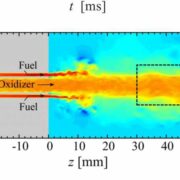What Erwin Schrödinger Views And Thought About The Upanishads

Quantum physics is one of the maximum fantastic trends of the twentieth century. Until the early 1900s or so, Isaac Newton’s legal guidelines of movement ruled the look at of the bodily universe. They had been later ‘upgraded’, for the maximum part, via way of means of Albert Einstein’s theories of relativity, and collectively, they may satisfactorily give an explanation for nearly all bodily phenomena. These classical theories fashioned the bedrock on which the complete superstructure of physics rested Erwin Schrödinger on upnishad view is also quite interesting.
But withinside the early 1900s, physicists located that subatomic debris like electrons ought to behave in methods that confounded the predictions of classical physics. To give an explanation for this behaviour, they formulated the theories and standards of quantum mechanics – collectively a hard and fast of herbal legal guidelines that would are expecting the behaviour of electrons and different subatomic debris very well.
Some of the extra famous amongst those physicists had been Einstein, Niels Bohr, Erwin Schrödinger and Werner Heisenberg. However, those physicists and others might quickly discover that the newcomer, at the same time as establishing new theoretical and technological vistas, additionally made a few ordinary predictions. For example, it allowed electrons to tunnel thru walls, debris to exist concurrently in locations at once, black holes to evaporate, and statistics to be exchanged among observers quicker than mild.
This changed into a critical second in history, whilst physics changed into in a nation of essential upheaval. The acquainted classical photo of truth changed into being disrupted via way of means of one which appeared to be too loopy to be actual, even because it defined severa experimental observations that the previous couldn’t. Einstein, Bohr, Schrödinger, Heisenberg and others had been deeply stricken via way of means of its implications. Indeed, they had been confronted with a non-public dilemma: to consider a preposterous concept that labored or discard it for an intuitive concept that didn’t work.
At this vital juncture, they observed that their notion, that the arena we see isn’t truth itself however a projection onto our attention, wasn’t absolutely new. In the historic Indian texts referred to as the Upanishads, they located echoes in their theories, and a philosophical basis to make sure they might now no longer be solid adrift via way of means of the results of quantum mechanics.
A strange world
Quantum physics took form thru numerous counterintuitive discoveries concerning the inconsistent behaviour of mild. James Maxwell confirmed in 1865 that mild may be modelled as electromagnetic waves. In 1905, Albert Einstein posted his paper at the photoelectric effect, wherein he proposed that mild consists of tiny massless debris known as photons. Louis de Broglie, a French aristocrat, unified those perspectives in 1924 with a ambitious concept that each one rely famous wave-like behaviour. This proposition, referred to as the wave-particle duality, spread out a Pandora’s container of arguments that task the character of truth, even its very existence.
According to classical physics, microscopic debris like electrons are stable round balls of rely. Quantum physics replaces this photo with some thing alien to our sensibilities. It says that in place of being in a single vicinity, an electron is positioned in a diffuse cloud of probabilities. If you try and examine the electron, there may be a better possibility that you may discover it in a denser place of the cloud than a sparser place.
This cloud is represented mathematically via way of means of the wave feature. And on the coronary heart of quantum physics is an equation that governs how a wave feature evolves as time passes. The Austrian-Irish physicist Erwin Schrödinger arrived at it in 1926, and so it’s known as the Schrödinger’s equation.
Science writers experience portraying the anxiety among the truth defined via way of means of quantum physics and the truth we understand thru our senses. Since macroscopic gadgets like bushes and automobiles are composed of microscopic debris like atoms and molecules, which in flip additionally behave like waves, macroscopic gadgets must additionally behave like waves. But this isn’t what we experience. The laptop on which I wrote this newsletter and the tool on that you are analyzing it simply don’t sense like waves!
So whilst does some thing forestall behaving like a wave and begin behaving like a bit of rely, an item composed strictly of debris? Surprisingly, this takes place whilst we examine it.
According to the Copenhagen interpretation of quantum mechanics, gazing an item reasons it to lose its quantum nature and fall apart into the classical shape we’re used to. This fall apart of the wave feature means that the truth we see exists most effective whilst we’re there to examine it. And an observer does now no longer simply examine truth; she creates it.
If left to themselves, matters might continue to be as waves till any individual determined them. Einstein, who couldn’t reconcile himself with this, summed up the strangeness of quantum physics whilst he requested a friend, “Do you consider the Moon exists most effective once I examine it?”
Subjective truth of the Upanishads
The Upanishads are a group of Sanskrit texts transmitted orally from trainer to scholar over lots of years. While the Vedas prescribe rituals to assuage deities, the Upanishads are involved with the character of truth, thoughts and the self.
Schrödinger changed into first uncovered to Indian philosophy round 1918, thru the writings of the German truth seeker Arthur Schopenhauer. An ardent scholar of the Upanishads, Schopenhauer had declared, “In the complete global there may be no look at so useful and so raising as that of the Upanishads. It has been the solace of my lifestyles. It might be the solace of my death.”
The Upanishads describe the connection among the Brahman and the Atman. Brahman is the prevalent self or the last singular truth. The Atman is the individual’s internal self, the soul. A vital guideline of the Upanishads is tat tvam asi, this means that the Brahman and the Atman are equal. There is most effective one prevalent self, and we’re all one with it.
The Isha Upanishad states, “the Brahman bureaucracy the entirety this is dwelling or non-dwelling … the clever guy is aware of that each one beings are equal together along with his self, and his self is the self of all beings.”
Schrödinger changed into curious about this notion. According to Subhash Kak’s book The Wishing Tree (2008), Schrödinger named his canine Atman, and his convention talks might, via way of means of one account, frequently quit with the statement ‘Atman=Brahman’, that he might call – incredibly self-aggrandisingly – the second one Schrödinger’s equation. When his affair with the Irish artist Sheila May ended, she wrote him a letter that alluded to this fascination: “I regarded into your eyes and located all lifestyles there, that spirit that you stated changed into no extra you or me, however us, one thoughts, one being … you could love me all of your lifestyles, however we’re now, now no longer one.”
Quantum physics removes the space among the observer and the determined. The Upanishads say that the observer and the determined are the identical matters. In his 1944 book What is Life?, Schrödinger took on a weird line of notion. If the arena is certainly created via way of means of our act of remark, there must be billions of such worlds, one for every of us. How come your global and my global are the identical? If some thing takes place in my global, does it take place to your global, too? What reasons a majority of these worlds to synchronise with every different?
He located his answer, again, withinside the Upanishads. “There is glaringly most effective one alternative,” he wrote, “specifically the unification of minds or consciousnesses. Their multiplicity is most effective apparent, in reality there may be most effective one thoughts. This is the doctrine of the Upanishads.”
According to the Upanishads, Brahman on my own exists. Everything we see round us is Maya, a distortion of the Brahman induced because of our lack of knowledge and imperfect senses. The Chandogya Upanishad says, “All that is Brahman. Everything comes from Brahman, the entirety is going returned to Brahman, and the entirety is continued via way of means of Brahman.”
On this, Schrödinger wrote, “… there may be most effective one issue and that what appears to be a plurality is simply a sequence of various components of this one issue, produced via way of means of a deception (the Indian Maya); the identical phantasm is produced in a gallery of mirrors, and withinside the identical manner Gaurisankar and Mt Everest grew to become out to be the identical top visible from distinct valleys.”
It is simple to look why the sort of idea might have appealed to Schrödinger. Quantum physics insists that truth exists as waves, and wave-particle duality arises because of our remark. Because we can’t understand the actual wave nature of truth, our remark reduces it to the unfinished truth we see. This discount is what we understand because the fall apart of the wave feature. The emergence of Maya hence smartly maps to the fall apart.
Schrödinger changed into now no longer making passing references to the Upanishads; instead, he had completely internalised their center message. “Myriads of suns, surrounded via way of means of likely inhabited planets, multiplicity of galaxies, every one with its myriads of suns… According to me, all these items are Maya.”
The Upanishads describe how truth arises out of attention. But attention can’t be located inner our our bodies as a substance or an organ. In that case, how can a non-cloth attention have interaction with and manage our cloth our bodies? Exactly wherein does thoughts have interaction with rely? This query is referred to as the thoughts-frame problem, and has vexed philosophers for an extended time.
Since we haven’t been capable of discover or give an explanation for this interaction, we’re left with a deceptively easy choice: both attention or truth doesn’t exist.
Most exponents of cutting-edge technology these days lean closer to the materialist view – that attention is a byproduct of the neurochemical strategies taking place in our brain. It relies upon on those strategies and can’t exist with out them.
On the opposite hand, the Upanishads uphold an idealist view – that attention exists via way of means of itself, and that the bodily global relies upon on it. There isn’t anyt any goal truth that exists independently of the observer. Schrödinger supported this view and lamented the aversion for it: “it have to be stated that to Western notion this doctrine has little appeal, it’s miles unpalatable, it’s miles dubbed fantastic, unscientific. Well, so it’s miles due to the fact our technology – Greek technology – is primarily based totally on objectivation, wherein it has reduce itself off from an ok know-how of the situation of cognisance, of the thoughts.”
So the thoughts-frame problem, he wrote, “is our fruitless quest for the vicinity wherein thoughts acts on rely or vice-versa … The cloth global has most effective been built on the fee of taking the self, this is, thoughts, out of it, getting rid of it; thoughts isn’t a part of it; glaringly, therefore, it could neither act on it nor be acted on via way of means of any of its parts.”
Physicists and Upanishads
Schrödinger changed into moved via way of means of the Upanishads. He mentioned it with all people he met and made decided efforts to comprise it in his lifestyles. The epitaph on his tombstone reads, “… So all Being is an one and most effective Being; And that it remains whilst a person dies; [this] tells you, that he did now no longer end to be.”
And he wasn’t on my own. Niels Bohr had famously stated, “I visit the Upanishad to invite questions.” In The Tao of Physics (1975), Fritjof Capra wrote of the time Heisenberg met Rabindranath Tagore, and that the “advent to Indian notion added Heisenberg tremendous comfort.”
J. Robert Oppenheimer, who led the Manhattan Project to expand the arena’s first nuclear weapons, discovered Sanskrit so he ought to study the Bhagavad Gita in its authentic shape. When he witnessed the primary atom bomb explode, he famously recalled a verse from the Gita, wherein Krishna suggests Arjuna his actual shape. He translated the verse into English hence: “Now I am come to be death, the destroyer of worlds.”
The Upanishads supplied solace – a theory of truth and the universe primarily based totally on remark and reasoning. In the precepts of those texts, the physicists located ethical comfort, highbrow braveness and non secular guidance.
Nothing attests to the significance of those philosophical edifices much less than absurd claims that Schrödinger and different scientists simply baked the instructions of the Upanishads into quantum concept. Such statements are deceptive thru and thru. Schrödinger changed into, foremost, a physicist deeply entrenched withinside the techniques of technology. Indian philosophy soothed his soul however it’s miles not going that it helped him body mathematical equations.
Indeed, Schrödinger changed into frequently vital of many Indian thoughts and talked about that they had been vulnerable to superstition. Modern technology, consistent with him, represented the zenith of human notion. He sought Indian philosophy now no longer to update the techniques of technology however to be inspired. He changed into conscious that blending structures of notion separated via way of means of lots of years changed into now no longer easy. He believed Western notion had to borrow thoughts from Indian philosophy – with tremendous care. As he wrote,
“I do consider that that is exactly the factor wherein our gift manner of wondering does want to be amended, possibly via way of means of a piece of blood-transfusion from Eastern notion. That will now no longer be easy, we have to watch out for blunders — blood-transfusion usually desires tremendous precaution to save you clotting. We do now no longer want to lose the logical precision that our clinical notion has reached, and this is unheard of everywhere at any epoch.”
Apart from philosophy, Indian thinkers have made crucial clinical contributions to astronomy, mathematics, literature, law, biology, psychology and maximum different geographical regions of human endeavour, if now no longer all of them. They frequently do now no longer get hold of the popularity due them. However, those times of overlooking – irrespective of how severe – can in no way be corrected via way of means of attributing doubtful achievements to those or different Indians.
The Upanishads themselves hold forth a message of harmony and are against any shape of discrimination. To adapt the phrases of the Isha Upanishad, “Who sees all beings of their very own self and their very own self in all beings, loses all hatred and fear.”





































